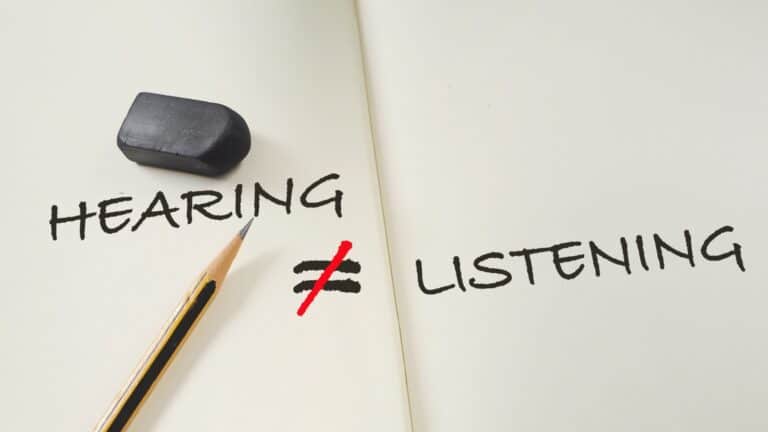11 Things Women Worry About That Don’t Bother Men
For many women, worry isn’t just an occasional visitor—it’s a constant companion shaped by both biology and society.
It turns out that worrying might be woven into the very fabric of being a woman. A study from the University of Cambridge found that women are nearly twice as likely to experience anxiety as men. This isn’t just a feeling; it’s a measurable difference observed across multiple studies, pointing to a genuine gap in how the sexes process stress and fear. The reasons are complex, involving everything from brain chemistry and hormonal fluctuations to societal pressures that start in childhood.
This tendency to worry more isn’t a sign of weakness but a reflection of a different internal landscape. The things that occupy a woman’s mind often differ from a man’s daily concerns. From physical safety to the intricate dynamics of social circles, women frequently carry a mental load that men might not even notice. We’ll explore eleven everyday worries that tend to weigh more heavily on women, backed by insights from experts who have studied these gender-based differences.
Personal Safety in Public Spaces
For many women, a simple walk to the car at night or a jog through a park involves a constant state of alert. This isn’t paranoia; it’s a learned response to a real threat. The Centers for Disease Control and Prevention (CDC) reports that a large number of women have experienced severe physical violence from an intimate partner in their lifetime. These statistics create a backdrop of caution that influences everyday decisions, from choosing a parking spot to what to wear.
Men, while not immune to violence, do not typically carry the same level of background anxiety about being targeted based on their gender. This hyper-vigilance is a significant mental burden for women, turning ordinary situations into a series of risk assessments. It’s a silent, ongoing task of checking surroundings, holding keys like a weapon, and sharing their location with friends just in case.
Physical Appearance and Aging

Concerns about appearance are common for everyone, but the pressure on women is exceptionally high and starts early. Research from the National Institutes of Health (NIH) highlights that body dissatisfaction is significantly more prevalent among women than men. This concern often evolves with age, shifting from worries about weight and skin to anxieties about wrinkles, gray hair, and looking “old.”
The multi-billion-dollar anti-aging industry is overwhelmingly marketed toward women, reinforcing the idea that a youthful appearance is essential to their value. Men, on the other hand, are often seen as becoming more distinguished with age—the “silver fox” archetype. This double standard creates a persistent stressor for women, who feel they are in a constant battle against the natural aging process.
The “Second Shift” of Household Chores
Even in households where both partners work full-time, women often perform a disproportionate amount of housework and childcare. This phenomenon, known as the “second shift,” is a significant source of stress and worry. The U.S. Bureau of Labor Statistics data consistently shows that on an average day, women spend more time on household activities like cleaning and food preparation than men do.
This isn’t just about the physical labor; it’s about the mental load of managing the home. Women are often the ones who remember to buy milk, schedule doctor’s appointments, and know where the extra paper towels are. This invisible work contributes to higher levels of chronic stress, as the responsibility for a smoothly running household often falls squarely on their shoulders, whether it’s acknowledged or not.
Being Perceived as “Too Aggressive” at Work
Women often walk a fine line in professional settings. They need to be assertive to be seen as competent leaders, but the same behavior that is praised in men can be criticized in women. A study highlighted by Harvard Business Review found that assertive women are often perceived as less likable, a penalty their male counterparts do not typically face. This raises concerns about how they are perceived by colleagues and superiors.
This concern can lead to “toning it down,” where women deliberately soften their language or hesitate to speak up to avoid being labeled as bossy, aggressive, or difficult. It’s a strategic calculation that men rarely have to make. They are generally free to be direct and authoritative without worrying about social backlash, giving them a distinct advantage in the workplace.
Pro Tip: Research from Stanford University suggests that women can counter this bias by pairing assertive statements with “communal” language. For example, framing a direct request around a shared team goal (“I think this approach will help us all succeed”) can make it more positively received.
Judging Other Women and Being Judged
Women can feel intense pressure to conform to social expectations, and a lot of that pressure comes from other women. This manifests as worry about being judged for everything from parenting choices to career ambitions. A study by the National Institutes of Health (NIH) found that women are more likely than men to engage in indirect aggression, such as gossip and social exclusion, which fuels this anxiety.
The fear of being ostracized by their own gender group is a powerful and stressful motivator. Men’s social structures are often more direct and less focused on subtle social cues. While they have their own hierarchies, the pervasive worry about what other men think of their life choices is generally less pronounced.
The Biological Clock and Fertility
For women who want children, the concept of a “biological clock” is a real and pressing concern. The American College of Obstetricians and Gynecologists (ACOG) confirms that female fertility begins to decline gradually but significantly starting around age 32. This biological reality creates a timeline that can influence major life decisions about career, relationships, and finances.
Men’s fertility also declines with age, but it happens much later and more slowly. They don’t face the same window of opportunity, which removes a huge source of life-planning anxiety. Women often feel they are in a race against time, a worry that can be all-consuming and impact their mental health and relationships.
The Emotional Labor of Relationships
Women are often expected to be the “emotional managers” in their relationships with partners, family, and friends. This involves anticipating the needs of others, managing conflicts, and providing constant support. While emotionally fulfilling, this work is often invisible and unacknowledged.
This constant emotional output can be draining and is a source of worry, especially when the effort isn’t reciprocated. Women may worry that if they stop performing this labor, their relationships will suffer or fall apart. Men are generally not socialized to take on this role, leaving them with more emotional energy for themselves.
The Contraception Burden

The responsibility for preventing pregnancy falls disproportionately on women. From remembering to take a daily pill to dealing with the side effects of hormonal IUDs or shots, the physical and mental burden is immense.
While vasectomies are safer and more effective than female sterilization, they are far less common. This leaves women to manage the daily or monthly task of birth control, along with the constant, low-grade worry about potential failure. For men, contraception is often an “out of sight, out of mind” issue, a luxury their female partners don’t have.
Finding a Doctor Who Listens
Many women worry that their health concerns will be dismissed or downplayed by medical professionals. Research has shown this fear is justified. Women’s pain is more likely to be undertreated and dismissed as emotional or psychological. This is particularly true for chronic conditions like endometriosis or autoimmune diseases.
This “medical gaslighting” can lead to years of suffering and delayed diagnoses. Women often have to become fierce advocates for their own health, a fight that is both exhausting and stressful. Men’s symptoms, especially for issues like heart disease, are often taken more seriously because they fit the “classic” textbook presentation derived from male-centric research.
The Pressure to Be “Nice”
From a young age, girls are often socialized to be agreeable, accommodating, and “nice.” This social conditioning creates a deep-seated worry about being disliked if they are direct, have a dissenting opinion, or set a boundary. Saying “no” can feel like a major transgression, accompanied by guilt and anxiety.
Boys are typically encouraged to be assertive and competitive, and their likability is not as closely tied to agreeableness. This freedom allows men to navigate negotiations, disagreements, and personal boundaries with less emotional baggage. For women, the simple act of prioritizing their own needs can feel like a rebellious act that jeopardizes their social standing.
Postpartum Mental Health

The period after childbirth is a time of immense change, and for many new mothers, it’s also a time of intense worry. The National Institute of Health(NIH) reports that postpartum depression is a serious medical condition that affects up to 15% of mothers. Beyond depression, many women experience high anxiety, worrying about the baby’s health, their ability to be a good mother, and how their life has changed.
While fathers can also experience postpartum mood disorders, the hormonal shifts, physical recovery from birth, and societal pressures on mothers make women uniquely vulnerable. The worry is often silent, as women feel ashamed or guilty for not feeling blissful during a time that is supposed to be happy. This isolates them when they need support the most.
Science Tells Us What To Expect As We Age: Strategies for Thriving in Later Life

Science Tells Us What To Expect As We Age: Strategies for Thriving in Later Life
How does aging affect our bodies and minds, and how can we adapt to those differences? These are questions that pertain to us all. Aging gradually alters people over decades, a long period shaped by individuals’ economic and social circumstances, their behaviors, their neighborhoods, and other factors. Also, while people experience common physiological issues in later life, they don’t follow a well-charted, developmentally predetermined path. Let’s take a look at what science has told us to expect.
Why Supersonic Flights Vanished From Our Skies

Why Supersonic Flights Vanished From Our Skies
Every year on August 19th, National Aviation Day celebrates the marvels of flight and the pioneers who made it possible. But as we look to the skies, one question lingers. If we could fly from New York to London in under three and a half hours back in the 1970s, why are we still taking nearly seven today? Supersonic travel was once a thrilling reality. So, what grounded it?







